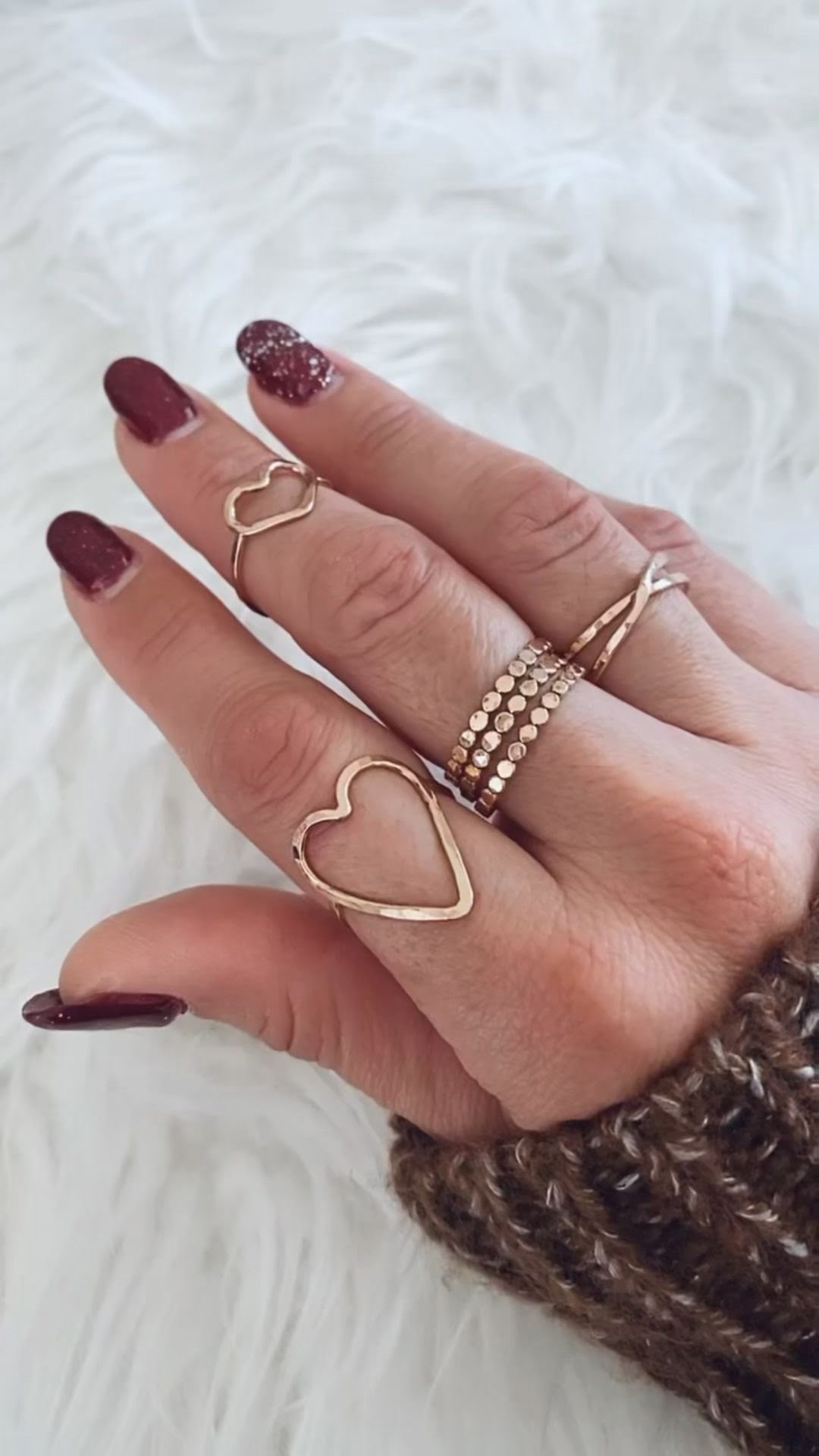Using metal polish for jewelry is a great way to keep your pieces looking shiny and new. Metal polish helps to remove dirt, tarnish and oxidation from metals like silver, brass, gold, and copper. The polish also helps to prevent further corrosion of the metal that can be caused by contact with air or other substances. Additionally, because it is non-abrasive it helps protect the gems mounted in the metal from scratching or other damage while cleaning.
Benefits of Metal Polish for Jewelry Maintenance
Using metal polish for jewelry offers many benefits, both for the piece being cleaned and for the wearer. Firstly metal polish can help restore a beautiful shine to your jewelry reminiscent of when it was newly purchased.
Secondly, using metal polish can keep your jewellery in good condition by protecting it from dirt and accumulated oils that make surfaces appear dull over time, as well as preventing corrosion that weakens structures. Another benefit of using a metal polish specifically designed for jewellery is that unlike most commercial cleaning products they are not harsh on gemstones so they won’t harm any precious stones mounted into the piece or loosen stone settings.
How To Use Metal Polish For Jewelry Properly?
To get the most out of using a metal polish for jewelry be sure to read the directions carefully before getting started. Make sure you know what type of metal you’re cleaning so that you don’t purchase the wrong type of cleaner; different varieties are formulated specifically for different metals and many products could actually cause harm if used on something they weren’t intended for.
When applying either cream or liquid polishes proper application techniques are important as well; start at one end and proceed gently in circular motions until all sections have been covered.
After this step let it sit for about 10 minutes before wiping clean with a soft cloth or cotton pad dampened with warm water; avoid rubbing too hard since doing so could scratch delicate surfaces. Lastly rinse thoroughly with warm water before buffing off any excess moisture with another dry cloth followed by drying which will ensure your jewellery looks its best.
Types of Metal Polish
Metal polish is a popular product to keep your jewelry in great condition for longer. The main purpose of metal polish is to help remove any tarnish, tarnish spots or discoloration from silver, gold, or other metals that you might have in your jewelry collection.
Metal polish can be bought over-the-counter, or it can also be homemade depending on the individual’s budget and circumstances. Each type of metal has its own specific cleaning agents and instructions that should be noted before starting the polishing process.
For instance, high quality silver polish requires special attention because pure silver is softer than other metals. It should only be wiped clean with a soft cloth and never exposed to harsh chemicals, including those found in many store-bought polishes.
Typically it’s best to mix metal polish designed for silver with warm water and then gently rub the mixture on your jewelry with a soft cloth in circular motions. This method helps reduce the chances of cuts due scratching from abrasive products.
Copper and brass are two types of jewelry which require special attention when it comes to cleaning them as well. Copper is susceptible to oxidation and needs gentler solutions like lemon juice sprinkled with baking soda or white vinegar mixed with salt to create a paste like substance.
This mixture should sit on the metal for 10 – 15 minutes before being rubbed off either by hand using a soft cloth or toothbrush for more difficult areas where oxidation has set in significantly. Brass requires similar care but requires an oxygen based-cleaner appropriate for brass items such as Nevr Dull which will shine up brass back up quickly without much effort at all.
Finally, gold is another precious metal highly sought after in fine jewelry pieces that deserves the same level of care but needs just a little bit more love than some of its counterparts. Use mild soap and water with gentle polishing action after drying each time you would like to clean it up again quickly while also maintaining its aesthetically pleasing sheen and protective layer intact.
For tougher tarnish spots gold cleaners designed specifically for this effect should be used sparingly since they can be very abrasive leaving scratch marks down the long run if mishandled frequently during use.
What to Look for When Buying a Metal Polish
Anytime jewelry is involved, taking extra care is important. Whether you are looking to restore the original shine on a piece you’ve owned for years or provide some love and care to your newly acquired accessory, using the right metal polish is essential to getting the job done without causing damage. Here are some key considerations that should be taken into account when selecting a metal polish for jewelry:
First of all, it is important to note the type of metal that is going to be polished. Many polishes are specifically designed for certain metals such as silver, gold and copper; opting for a product that matches what you will be working with can simplify things by providing clear guidance on the duration of the cleaning process and other specific instructions based on the type of metal being polished.
Even for those polishes that indicate they can handle numerous types of metals, keep in mind that certain solutions may contain stronger acids than others, which could cause damage if used improperly.
The second factor we recommend keeping an eye out for revolves around gentleness – both in terms of effectiveness and safety. Jewelry often has intricate designs and symbols etched onto them; so between having weak but gentle solutions like baking soda or vinegar present as well as having polishing cloths that won’t scratch or dull surfaces – there should be no issue finding something suitable for your needs.
Finally, while this isn’t necessarily a requirement per se, natural mineral-based cleansers tend to provide superior results more often than not when it comes to buffing or restoring jewelry pieces back to their original form safely – minus any risk associated with using chemicals or questionable brews made using kitchen products like baking soda and vinegar we previously mentioned.
If you are looking for something more user friendly and gentle (particularly when compared against traditional store-bought options) then don’t hesitate to look into some cleaner alternatives such as plant-based soap with lukewarm water paired with a soft cloth or brush.
By taking these tips into consideration when deciding which metal polish product works best for your jewelry needs – you really can’t go wrong. Not only will this help you get better results; but more importantly prevent additional damage from occurring during attempted cleanings gone wrong.
How to Apply Metal Polish
Metal polish is an essential tool for anyone who owns jewelry. Whether it’s a fine piece of diamond jewelry or a simple sterling silver necklace, metal polish can restore luster and shine to dull metals and make them look new again.
However, many people don’t know the proper way of applying metal polish, resulting in an inferior job that doesn’t protect their jewelry from tarnish. Read on to find out how to apply metal polish so your jewelry remains beautiful for years to come.
When using any type of metal polish, always read the safety instructions on the label first. It is also important that you choose a soft cloth such as cotton or felt and make sure it is free of dust or dirt beforehand.
Once you have chosen your cloth and read the safety instructions, apply a few drops of the metal polish onto your cloth before rubbing it into the metal surface in circular motions with moderate pressure. After polishing an area well be sure to move onto another area so as not to overpolish a small area, which can cause thinning and wear.
Once you have polished around all areas of the jewelry item it is necessary to use water created from distilled white vinegar or lemon juice mixed with water as a rinse agent. By dipping your cloth into this mixture and wiping down your piece you will ensure that any remaining residue from your polishing cloth or product will be removed before it causes any damage to your item’s original finish.
Lastly you must use a dry towel such as cotton flannel in order to fully dry off any lingering moisture before returning your item back into its box or enjoy wearing it.
In conclusion, taking care when polishing any type of jewelry item made of metal can greatly extend its life and continue its beauty for years to come by following these simple steps described above every time when caring for it. Properly cleaning and taking precautionary measures when using products such as metal Polish specifically designed for specific materials is important if one wishes their items to stay safe yet clean and aesthetically pleasing throughout their lives.
Professional Techniques for Polishing Metal Jewelry
Whether you are an amateur jewelrymaker or a professional, proper finishing and polishing of your pieces is extremely important. Metal jewelry can tarnish and lose its luster over time due to elements such as the environment, body oil, and buildup on the metal. Using metal polish specifically designed for jewelry is the best way to ensure that your pieces look perfect every time.
There are many different types of metal polish available on the market that will work well with most metals used in jewelry making, including copper, silver, gold, silver-filled, brass and bronze. Jewelry makers should carefully read the label of any product they intend to use on their projects and figure out which type will work best for their particular piece.
It’s also important to note that there are metal polishes specifically formulated for antique brass pieces or oxidized silver pieces.
Before using metal polish on any piece of jewelry, it’s essential to prepare the surface first by cleaning away any dirt or oils with soapy water or a gentle scrubbing pad. After letting the item dry completely then you can choose which type of polish would perform best on that particular piece, this may include liquid polish or paste-style paste depending on how it needs to shine after polishing.
To apply these products you’ll need cotton balls and cotton swabs as well as some gloves for protection against harsh chemicals. When using a paste based product simply dip your cotton ball in the paste then dab it onto each area of your piece avoiding contact with stones that could be affected by acid in the polish if there are stones set in place.
Moving in circular directions allow the product time to settle into crevices while removing fine deposits quickly adding back shine back to dulled surfaces. If using a liquid based product it is equally important not to get it on stones if there are any set places but instead use thin coats onto each section avoiding contact with clothing during application process due to possible reports staining felt from liquids present in polish.
Allow each coat time between applications no more then 3 minutes apart for longer lasting finishability.Rinse off remaining residue from each area until all cleaner or paste is removed before buffing off excess with a clean cloth. This will restore full shiny effects without harming sensitivity from stones nearly without damaging surrounding metals around each section .
Making sure you use professional techniques when polishing metal jewelry will ensure that you are providing quality pieces every time. Investing in quality products designed specifically for jewelry polishing is one way to guarantee consistent results across all of your projects–regardless of whether its costume-style beads you design or bezel-set diamonds encrusted bands.
Protect your skin by wearing gloves for safety , Polishing heavy buildup now only saves future hassle down line increasing overall value of metal creations while remaining safe and handling procedures correctly for more enjoyable experience whole process than originally anticipated containing many beautiful results afterwards.
Safety Tips for Working with Metal Polish
Metal polish can be a great way to make the jewelry you own sparkle. It allows you to give old jewelry a new life and enhance its beauty. However, it can also be dangerous if not used properly. Here are some safety tips for working with metal polish to ensure that you get the j ewelry of your dreams without endangering your health or destroying your precious item.
First and foremost is to always wear gloves when applying metal polishes. Even though the bottles may say they are non-toxic, they still contain chemicals that can irritate or burn the skin on contact.
Wearing gloves protects your skin from exposure and also avoids oils from your hands potentially damaging the jewelry surface. Some types of metal may require special gloves designed to handle their unique properties, so be sure to check what type of glove is appropriate for your purpose before starting.
Next, make sure you use small amounts of polish at a time and spread it evenly so as not to clump around delicate areas such as stones settings or engravings. Using too much polish can damage these areas and ruin the piece, so it’s important to handle with care by using small movements in circular motions rather than large sweeping gestures when applying it.
Additionally, never use a steel wool pad with metal polish because this will damage the surface of any polished items since steel wool tends to scratch them easily and leave unwanted blemishes on their surfaces.
Finally it’s a good idea to test out a small patch of any new metal polish before committing to use it on an entire piece, in case you have any allergies or don’t like how it affects the overall look after finished polishing. A quick test should prevent any nasty surprises down the line.
With these safety tips in mind, you will be well on your way towards getting that beautiful finish you desire on all of your jewelry projects.
Aftercare of Polished Jewelry
When it comes to keeping jewelry looking its best, regular metal polishing with the right product can make a world of difference. Metals that require extra attention in terms of polishing should be treated with a specialized metal polish specifically designated for gold and silver jewelry. Metal polishing is one of the best ways to clean, protect and keep jewelry shining and new-looking for longer.
For those who have not ever polished their jewelry before, doing so correctly requires some basic knowledge about what metal polish works best for the type of metals you are using. Depending on what kind of jewelry you own – such as sterling silver pieces, platinum or other precious metals – different jewelers use different products to ensure the best results.
Sterling silver is especially susceptible to oxidation, which leads to tarnish over time; therefore it needs special care when applying any metal polish on it.
It’s important not to use too much pressure when rubbing a cloth or cotton ball with polish on it, since this can cause your metals to scratch and harm the finish. Also, you should consider using gloves while handling any compositions that contain abrasive particles or chemicals that may be harmful if touched by bare hands directly.
Once you’ve applied a metal polish correctly, it’s also important to remember to follow up with an occasional waxing regimen as well. This will help preserve the original color and shine of your metals while preventing further oxidation from occurring over time. A good quality wax helps seal in moisture while locking out air; this helps combat oxidation and keeps your metals looking bright and sparkling for years to come.
Making sure your jewelry remains free from dust, sweat and grime will also go a long way towards prolonging its life span. Jewelry should be carefully stored away in fabric bags or cloths so that they won’t rub against each other or become scratched – take special care not to leave them in direct sunlight or near any source of extreme heat since these conditions can cause damage as well.
Conclusion
Finding the right metal polish for jewelry can make a world of difference in restoring and renewing precious metals in our most loved jewelry pieces. Not all metal polishes are created equal, so it is important to do your research and understand the risks associated with use. It is also important to understand the materials that you are applying it to, as not all polishes will work on every type of metal.
When it comes to choosing a good metal polish, there are several key takeaways to keep in mind. First of all, be sure to purchase good quality products from reputable suppliers. Low-quality polishes may not yield the desired results and could even damage your jewelry. Secondly, always follow the manufacturer’s instructions when applying metal polish to your jewelry.
This will ensure that you get the best results possible while protecting your jewels from harm. Lastly, remember that different metals require different cleaning methods. Silver and gold require different polishing processes, so read up on what best suits your jewelry before you start cleaning it up.
Now that you have the key takeaways on selecting suitable metal polish for jewelry, it’s time to put them into practice. Start by doing some research into reputable brands or distributors of quality products. Also check out product reviews online so you can see what other customers think of certain items before making a purchase decision.
It is also advised that you know what type of metals are present in your jewelry pieces before selecting an appropriate cleaning agent for them – some polishes may react negatively with certain types of materials which could result in further damage to them. Additionally, be sure to always follow manufacturer instructions carefully when using any type of cleaner as each product has specific guidelines when it comes to usage and safety considerations.
Finally, after each use, store any remaining product safely away from children and pets as they can be toxic if ingested or inhaled directly or indirectly through vapors generated during the jewellery cleaning process.

Welcome to my jewelry blog! My name is Sarah and I am the owner of this blog.
I love making jewelry and sharing my creations with others.
So whether you’re someone who loves wearing jewelry yourself or simply enjoys learning about it, be sure to check out my blog for insightful posts on everything related to this exciting topic!





